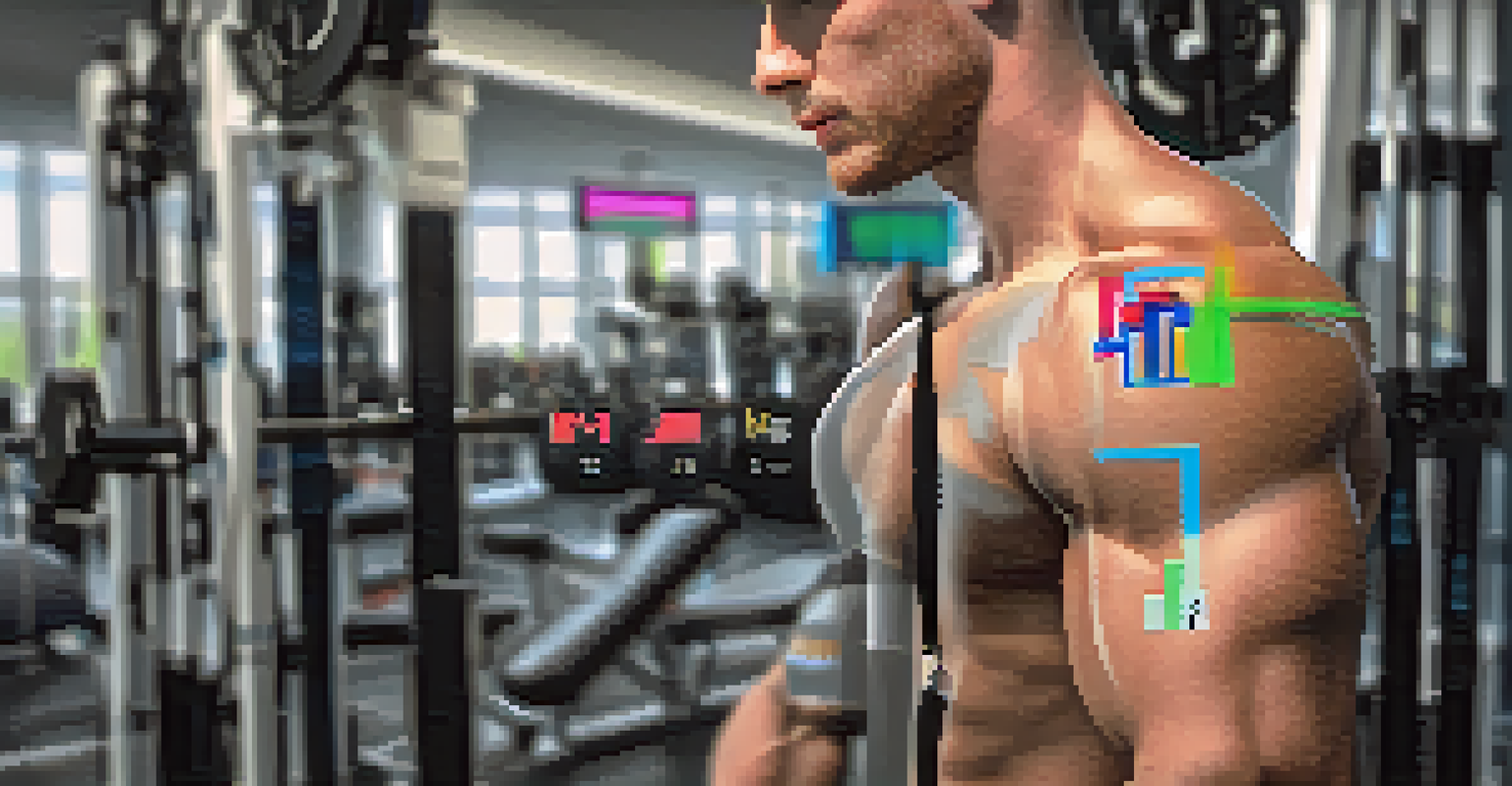The Science Behind Biofeedback Techniques in Powerlifting

What is Biofeedback and Why It Matters in Powerlifting
Biofeedback is a technique that teaches individuals to control physiological processes by providing real-time data about their body's functions. In powerlifting, this means using technology to monitor muscle tension, heart rate, and breathing patterns. By understanding these responses, athletes can optimize their performance and technique.
Biofeedback is a powerful tool that can help athletes become more aware of their bodies and improve their performance.
For instance, a powerlifter might use biofeedback to identify when their muscles are too tense during a lift. This awareness allows for adjustments that can enhance strength and prevent injury. Essentially, biofeedback acts as a bridge between physical performance and mental awareness.
This practice not only helps lifters improve their form but also fosters a deeper connection with their body. As they learn to listen to their physiological signals, they can make informed decisions that lead to better outcomes in their training.
The Mechanism of Biofeedback: How It Works
Biofeedback works by using sensors that detect various bodily functions, such as muscle activity or heart rate variability. These sensors send data to a display device, allowing athletes to see real-time feedback. This immediate information can be crucial in making quick adjustments during a workout session.

For example, if a lifter notices that their heart rate spikes excessively during a heavy squat, they can focus on their breathing to calm their heart rate. This interplay of feedback and action helps athletes fine-tune their approaches to lifting.
Biofeedback Enhances Powerlifting
This technique allows athletes to monitor physiological responses, improving performance and preventing injuries.
Moreover, the data collected can be analyzed over time, allowing lifters to track their progress and make informed decisions about their training regimens. This cycle of feedback and adjustment is what makes biofeedback particularly powerful in powerlifting.
Types of Biofeedback Techniques Used in Powerlifting
There are several types of biofeedback techniques commonly used in powerlifting, including electromyography (EMG), heart rate variability (HRV), and respiratory feedback. EMG involves measuring muscle electrical activity, which can help lifters understand their muscle recruitment patterns. This insight is essential for optimizing lifts and preventing injuries.
The mind and body are not separate. what affects one, affects the other.
Heart rate variability biofeedback, on the other hand, focuses on the intervals between heartbeats. A higher variability often indicates better recovery and overall cardiovascular health, which are crucial for powerlifters during intense training periods.
Lastly, respiratory feedback can help athletes manage their breathing techniques during lifts. Learning to control breath can enhance stability and strength, allowing for more effective and safer lifts.
The Role of Mindfulness in Biofeedback Training
Mindfulness plays a significant role in the effectiveness of biofeedback techniques. By being present and aware of their body’s signals, powerlifters can make better use of the insights gained from biofeedback. This mental focus not only improves physical performance but also fosters a greater sense of control.
For example, a powerlifter practicing mindfulness might notice subtle changes in muscle tension during a lift that they would normally overlook. With this awareness, they can adjust their technique in real-time, leading to better outcomes.
Mindfulness Boosts Training Efficacy
Practicing mindfulness alongside biofeedback helps lifters become more aware of their body's signals, leading to better technique adjustments.
Incorporating mindfulness into training can also reduce anxiety and improve concentration, which are vital when attempting heavy lifts. The combination of mindfulness and biofeedback creates a powerful tool for enhancing performance.
Biofeedback for Recovery: A Game Changer
Biofeedback isn't just beneficial during training; it also plays a crucial role in recovery. By monitoring physiological signals, athletes can determine when their bodies need rest or when they are ready to push harder. This understanding can prevent overtraining and reduce the risk of injuries.
For instance, by tracking heart rate recovery after intense sessions, powerlifters can gauge their recovery status. If their heart rate returns to baseline more slowly than usual, it might indicate the need for additional rest.
In this way, biofeedback empowers athletes to listen to their bodies, promoting a sustainable training approach that prioritizes health and longevity in the sport.
Integrating Biofeedback into Powerlifting Programs
Incorporating biofeedback into a powerlifting program requires a strategic approach. Athletes can start by selecting the right biofeedback tools that align with their specific goals, whether it’s improving technique or enhancing recovery. Many fitness facilities now offer biofeedback devices, making them more accessible than ever.
Additionally, working with a coach who understands biofeedback can further enhance its effectiveness. Coaches can provide insights on how to interpret the data and apply it to training sessions, ensuring that lifters get the most out of their biofeedback experience.
Biofeedback Aids Recovery Processes
By tracking physiological signals, athletes can better understand their recovery needs, thereby preventing overtraining and injuries.
It's essential to remember that biofeedback is not a magic solution. Instead, it should be viewed as a complementary tool, working alongside traditional training methods to create a more holistic approach to performance enhancement.
Future Trends in Biofeedback for Powerlifting
As technology continues to evolve, the future of biofeedback in powerlifting looks promising. Emerging wearable devices are becoming increasingly sophisticated, offering more precise metrics and data analysis. This advancement can lead to more personalized training programs tailored to individual lifters’ needs.
Moreover, integrating artificial intelligence (AI) with biofeedback could revolutionize how athletes train. AI could analyze vast amounts of data, providing actionable insights that help lifters optimize their performance and recovery strategies.

In conclusion, the fusion of technology and training in powerlifting through biofeedback not only enhances performance but also paves the way for a more scientific approach to strength training.